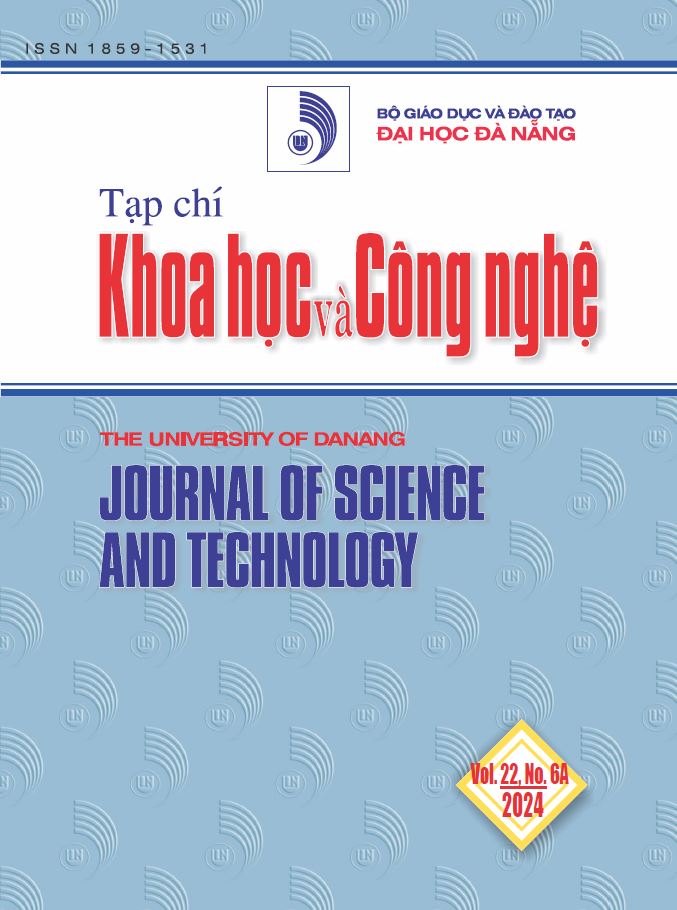Exploring the potential of swarm intelligence for optimal energy efficiency in IoT downlink system
 Tóm tắt: 187
Tóm tắt: 187
 |
|  PDF: 159
PDF: 159 
##plugins.themes.academic_pro.article.main##
Author
-
Vien Nguyen-Duy-NhatThe University of Danang - University of Science and Technology, VietnamHung Nguyen-LeThe University of Danang - University of Technology and Education, Vietnam
Từ khóa:
Tóm tắt
This study delves into the energy optimization problem in Internet of Things (IoT) networks. We consider the downlink from multiple antenna Gateway (GW) and single antenna IoT devices. For this challenging nonconvex problem, we initially introduced the well-known zero-forcing beamforming (ZFBF) to eliminate inter-user interference, thereby transforming the energy efficiency maximization problem into a concave-convex fractional problem. Then, instead of applying a combination of ZFBF with power allocation, we propose the Particle Swarm Optimization (PSO) algorithm to allocate power to find the optimized beamforming matrix. Through extensive numerical analysis, we demonstrate the effectiveness of our proposed scheme in terms of energy efficiency and power achieved at the GW. The results underscore the significant benefits of our approach over conventional methods, paving the way for practical and efficient energy optimization in IoT networks.
Tài liệu tham khảo
-
[1] A. Laghari, K. Wu, R. A. Laghari, M. Ali, and A. A. Khan. “A review and state of art of Internet of Things (IoT)”, Archives of Computational Methods in Engineering, vol. 29, no. 3, pp. 1–19, 2021.
[2] S. Abdul-Qawy, P. J Pramod, E. Magesh, and T. Srinivasulu. “The Internet of Things (IoT): An overview”, International Journal of Engineering Research and Applications, vol. 5, no. 12, pp. 71-82, 2015.
[3] V. Kranenburg and A. Bassi. “IoT challenges”, Communications in Mobile Computing, vol. 1, no. 1 pp. 1-9, 2012.
[4] A. Mouha. “Internet of things (IoT)”, Journal of Data Analysis and Information Processing, vol. 9, no. 2, pp. 77–101, 2021.
[5] Madakam, R. Ramaswamy, and S. Tripathi. “Internet of Things (IoT): A literature review”, Journal of Computer and Communications, vol. 3, no. 5, pp. 164–173, 2015.
[6] Kaur and S. K. Sood. “An energyefficient architecture for the Internet of Things (IoT)”, IEEE Systems Journal, vol. 11, no. 2, pp. 796–805, 2015.
[7] Jayakumar, A. Raha, Y. Kim, S. Sutar, W.S. Lee, and V. Raghunathan. “Energy-efficient system design for IoT devices”, in Proc. 2016 21st Asia and South Pacific design automation conference (ASPDAC). IEEE, pp. 298–301, 2016.
[8] B. S. Manosha, M. Codreanu, N. Rajatheva, and M. Latva-aho. “Power–throughput tradeoff in MIMO heterogeneous networks”, IEEE transactions on wireless communications, vol. 13, no. 8, pp. 4309–4322, 2014.
[9] Ding and J. Wu. “Study on Energy Consumption Optimization Scheduling for Internet of Things”, IEEE Access, vol. 7, pp. 70574–70583, 2019. doi: 10.1109/ACCESS.2019.2919769.
[10] Tervo, L. -N. Tran, and M. Juntti, “Optimal Energy-Efficient Transmit Beamforming for Multi-User MISO Downlink”, IEEE Transactions on Signal Processing, vol. 63, no. 20, pp. 5574-5588, 2015, doi: 10.1109/TSP.2015.2453134.
[11] C. Bansal, H. Sharma, K. Deep, K. N. Das, and A. Nagar, “Special issue on swarm intelligence and its applications to engineering.” International Journal of System Assurance Engineering and Management, vol. 9, pp. 739-740, 2018.
[12] C. Thrun and A. Ultsch. “Swarm intelligence for self-organized clustering”, Artificial Intelligence, vol. 290, pp. 103237, 2021. doi:10.1016/j.artint.2020.103237.
[13] Kennedy, Handbook of nature-inspired and innovative computing: integrating classical models with emerging technologies. Springer, pp. 187–219, 2006.
[14] Chakraborty and A. K. Kar, Nature-inspired computing and optimization: Theory and applications, Springer, Cham, pp. 475-494, 2017.
[15] D. N. Vien and L. T. P. Mai “On the Robust Design for IoT-Based Wireless Information and Power Transmission Network”, The University of Danang - Journal of Science and Technology, vol 20, no. 12.2, pp. 19-24, 2022, doi:10.31130/ud-jst.2022.505ICT.
[16] T. P. Mai, N. D. N. Vien, N. V. Hieu, O. S. Shin, and P. V. Tuan, “Optimizing beamforming in IoT-WET: A symbiotic-based approach under imperfect channel state information”, Physical Communication, vol. 65, pp. 102370, 2024, https://doi.org/10.1016/j.phycom.2024.102370.
[17] R. Bonyadi and Z. Michalewicz. “Particle swarm optimization for single objective continuous space problems: a review”, Evolutionary Computation, vol. 25, no.1, pp. 1–54, 2017.
[18] Marini and B. Walczak. “Particle swarm optimization (PSO). A tutorial”. Chemometrics and Intelligent Laboratory Systems, vol. 149, pp. 153– 165, 2015.
[19] Dinkelbach. “On Nonlinear Fractional Programming”, Management Science, vol. 13, no. 7, pp. 492– 498, 1967. doi: 10.1287/mnsc.13.7.492.
[20] H. Spencer, A. L. Swindlehurst, and M. Haardt. “Zero-forcing methods for downlink spatial multiplexing in multiuser MIMO channels”, IEEE Transactions on Signal Processing, vol. 52, no. 2, pp. 461–471, 2004. doi: 10.1109/TSP.2003.821107.
[21] Bjornson, M. Bengtsson, and B. Ottersten, “Optimal multiuser transmit beamforming: A difficult problem with a simple solution structure [lecture notes]”, IEEE Signal Processing Magazine, vol. 31, no.4, pp. 142–148, 2014.
[22] Bubeck “Convex optimization: Algorithms and complexity”, Foundations and Trends® in Machine Learning, vol. 8, no. 3-4, pp. 231–357, 2015.
[23] ETSI, “ETSI Technical Report 136.931 Radio frequency (RF) Requirements for LTE Pico Node B, Release 15. Tech. rep. 3GPP”, 2018.



